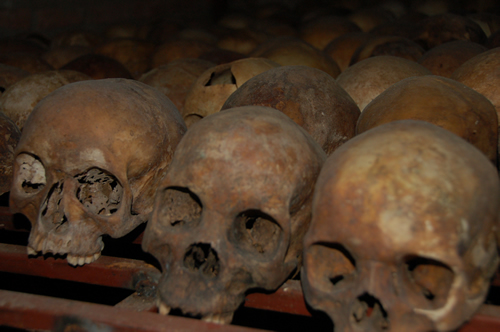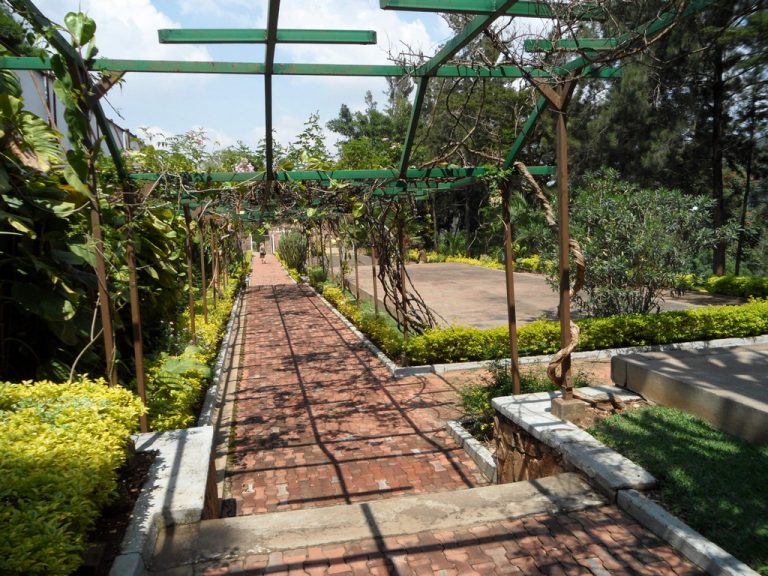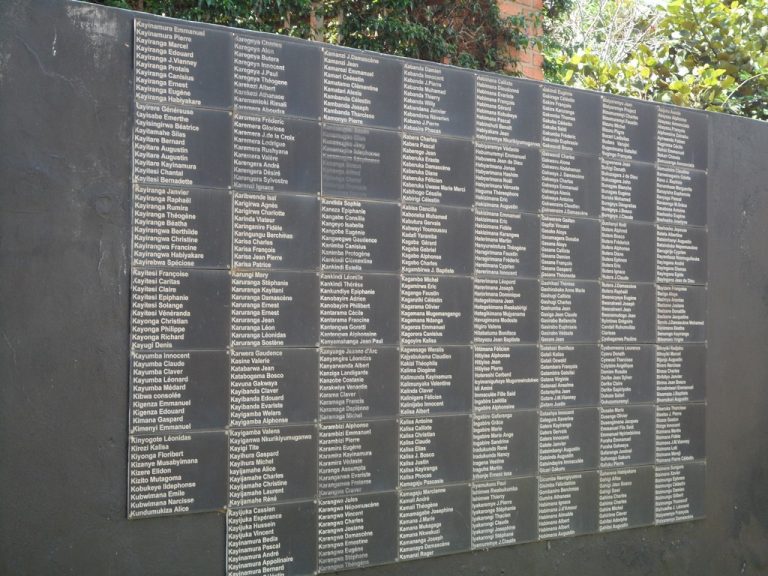For students in Aggrey Wasike’s course, being at some of the sites where the Rwandan genocide took place was an unusually profound experience.
“It is very important for students from Canada to see for themselves,” said Wasike. “Talking about something, or learning about something in a classroom does not come anywhere close to experiencing it for real. Visiting Rwanda created vivid memories for students, and they are likely to retain those memories for the rest of their lives.”
The course – African Systems of Thoughts (NEW351) – is devoted to foundational thinking about issues relating to genocide, as well as African thought in many different forms from cosmology to ethics to language, politics and government.
“This course is very interdisciplinary and ties together my linguistics, African languages and education background, as well as my interest in general African studies,” said Wasike, who was born in Kenya and whose research covers Bantu languages, African languages as well as related issues such as language policy, language and integration in post-colonial Africa.

The trip to Rwanda marked the first time that students in the course travelled to Africa to directly explore some of the issues they were studying. The group travelled about 30 km south of Kigali, Rwanda’s capital city, to Nyamata Church. Today the site is one of the memorials for up to 1 million people murdered during the 100 days of the Rwandan genocide. But back in 1994, Nyamata Church, which had first served as a refuge for those fleeing the genocide, was the site of a massacre.
“Our guide explained that all the people who were hiding in a separate kitchen building were burned to death, and that children were taken to the Sunday school room and killed by smashing their heads against the wall,” said Wasike.
A total of 50,000 people in the area, mostly women and children were killed and skulls and bones of the many victims are on display at Nyamata Church.
“You can feel the lasting sorrow and death that has impacted Rwanda when you visit the memorials, and it is visible how many lives were lost in such violent ways,” said Jennifer Paul, a fourth-year student who is majoring in political science and diaspora & transnational studies. “It’s an extremely tragic yet important part of Rwanda’s history that they make sure is not forgotten.”

Chinezelum Azogu, a fourth-year Spanish specialist, took part to learn more about the genocide but also to better understand how Rwanda has moved forward since then.
“When we visited the genocide memorial sites, we saw graphic evidence of the violence that occurred during the genocide, but when you walk on the streets and drive down the countryside, there is a sense of great peace and calm as if it had never happened,” she said.
“Learning about the genocide from the survivors also highlighted the complexity of human relations and how actions by different actors in society can lead to disastrous consequences,” Azogu said. Visiting The Children’s Room – filled with pictures of children killed during the genocide – at the Kigali Memorial made an indelible mark on her.
“It really made me aware that my actions and those of others must always encourage peace and diplomacy to ensure the security of every life, especially such young and innocent lives.”

The trip provided students with exposure to concepts they had covered in class, including retributive and restorative justice.
“Rwanda is in many ways a microcosm of Africa, and I thought it would be the best place to illustrate some of the concepts and ideas that students learn in NEW351,” said Wasike. “Rwanda experienced genocide and had to deal with justice for both the victims and perpetrators. More importantly Rwandans needed to find ways of healing and moving forward as one unified country.”
While Canada and Rwanda are different in many ways, Wasike notes that our own truth and reconciliation process could benefit from Rwanda’s experiences.
“I think one lesson that Canada can learn from Rwanda is that restorative justice is the better option for healing, mending broken relationships, dealing with mistrust and building harmony in any society whose past has dark, criminal and unjust spots,” said Wasike.
“Real justice and true healing begins when the victims and perpetrators come face to face with each other in a public space where they engage in an open and frank discussion of the crimes and ills that were committed.
“For restorative justice to be successful, the perpetrators must be sincere, take full responsibility for the wrongs that they committed, and they must be ready to apologize and ask for forgiveness. For their part, the victims must be ready to accept the perpetrators’ contrition and they must be ready to forgive them. If they demand reparations, or some punishment, it should not be excessive and overbearing. It should be minimal in order not make the perpetrator resentful. This is important because both the victim and perpetrator must coexist.
“They both need to heal and join forces in building a better and stronger community.”
The trip to Rwanda was offered as part of the Faculty of Arts & Science International Course Modules program, which enables students to travel to a location to experience, in a more immediate way, the material they are studying in their course.

